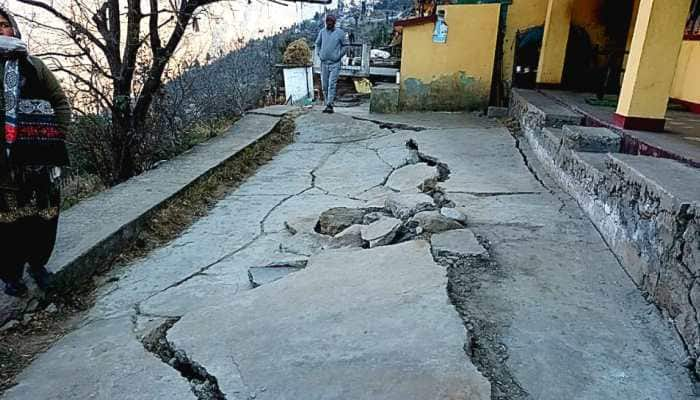Many families in Uttarakhand’s Joshimath have relocated to safer areas after their homes developed deep cracks, causing them to panic.

Crisis in Joshimath
- Joshimath is built on an ancient landslide that is composed of sand and stone rather than rock.
- The rivers Alaknanda and Dhauli Ganga contribute to landslides by eroding river banks and mountain edges.
- According to the 1976 Mishra Committee Report, increased construction activity and growing population are thought to have contributed to frequent landslides in the area.
Why is it sinking?
- Joshimath is a sand and stone deposit, not the main rock, so it was unsuitable for a township.
- Natural factors have become out of balance as a result of vibrations caused by blasting, heavy traffic, and so on.
- Landslides are also caused by a lack of proper drainage facilities.
- A large amount of water has percolated down into the porous crystalline rocks beneath the surface, softening them even more.
- When water is not allowed to flow naturally, it creates a lot of pressure, either above or below ground.
- Cavities between the soil and the boulders are caused by the presence of soak pits, which allow water to slowly soak into the ground.
- As a result, water seepage and soil erosion occur.
Joshimath’s Town Planning Issues
- Overt tourism: As a result of tourists flocking to at least three important shrines — Badrinath, Hemkund Sahib, and Shankaracharya temple — major infrastructure development has occurred.
- Neglecting topography: There are numerous loose soft rocks, moraine (material left by receding glaciers), and sediments. As a result, the soil is unsuitable for large-scale construction.
- Area of seismic activity: In addition, the area is in a high seismic zone and experiences frequent tremors, making the topsoil unstable.
Preventing a disaster
1976 Mishra Committee Report suggested-
- Imposition of restrictions on heavy construction: Construction should only be allowed after examining the load-bearing capacity of the soil and the stability of the site, and restrictions on slope excavation should also be imposed, according to the 1976 Mishra Committee Report.
- Keeping the boulders: In landslide areas, stones and boulders should not be removed from the bottom of the hill because this removes toe support, increasing the likelihood of landslides.
- Crack sealing: Cracks that have formed on the slopes should be sealed. The toe of a landslide is the lowest point.
- Tree conservation: It has also advised against cutting trees in the landslide zone, and has stated that extensive plantation work in the area, particularly between Marwari and Joshimath, should be undertaken to conserve soil and water resources.
- Agriculture on slopes should be avoided because activities like ploughing loosen the soil, increasing the risk of landslides.
- Preventing water seepage: To avoid future landslides, open rain water seepage must be stopped through the construction of a pucca drainage system.
- Cobbled roads: Roads should be metalled and should not have scuppers that drain water from the road surface.
- River training entails constructing structures to direct the flow of the river. Hanging boulders in the foothills should be properly supported.
Way ahead
- People’s safety should be a top priority right away. The state government should open a clear and continuous line of communication with the affected people.
- A time-bound reconstruction strategy must be developed.
- Continuous seismic monitoring is required.
- Joshimath should also have a risk-averse urban development plan.
Source: https://www.businesstoday.in/latest/in-focus/story/joshimath-crisis-govt-ramps-up-efforts-to-save-sinking-town-all-you-need-to-know-359383-2023-01-09
